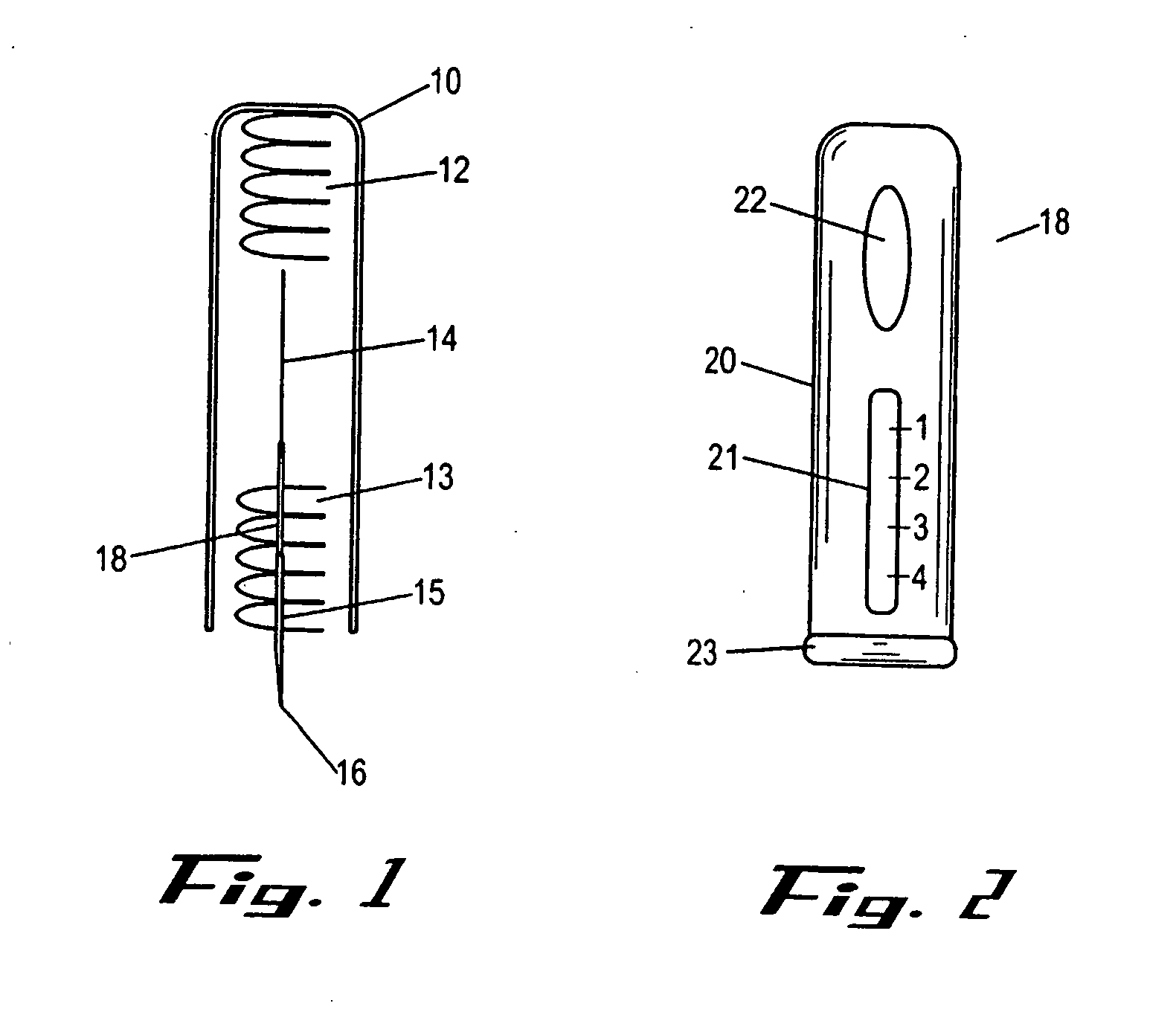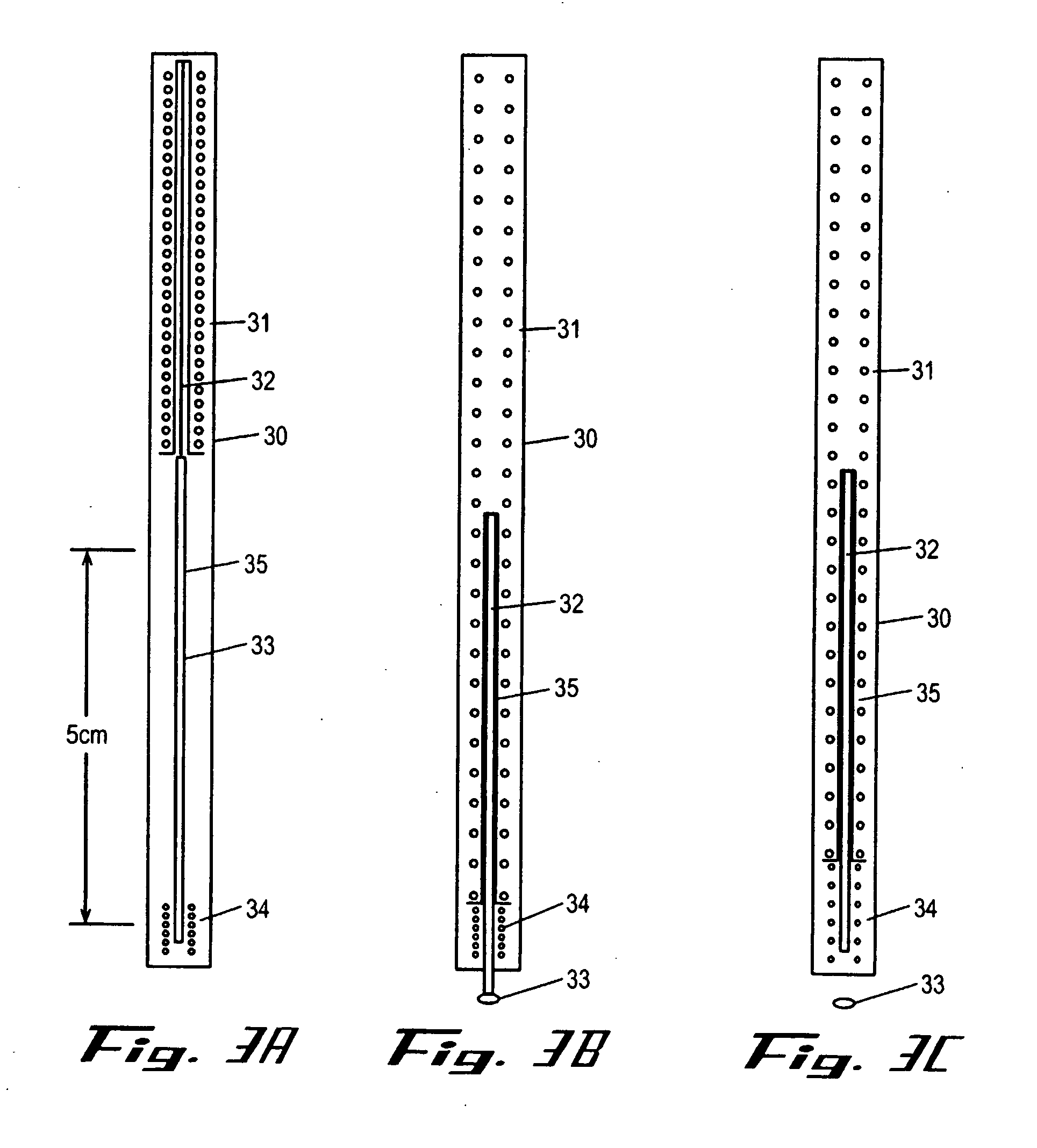Intracutaneous injection
a technology of intracutaneous injection and injection site, which is applied in the direction of prosthesis, automatic syringe, peptide/protein ingredients, etc., can solve the problems of pain and discomfort at the site of administration associated with certain pharmaceutically active agents, and the degree of discomfort of the patien
- Summary
- Abstract
- Description
- Claims
- Application Information
AI Technical Summary
Benefits of technology
Problems solved by technology
Method used
Image
Examples
formulation examples
Example 1
[0146] A dry powder formulation of recombinant human growth hormone was prepared by lyophilizing a 5 mg / ml solution of hGH in 5 mM Tris buffer pH=7.6. Pastes of approximately 30% (w / w) solids were formulated by addition of approximately 230 mg of either N-methy-pyrollidone or an NMP / benzyl benzoate mixture to 100 mg of hGH / Tris to produce a 29% (w / w) hGH formulation. Dissolution of the formulation demonstrates that the NMP / BB mixture resulted in greater recovery of soluble hGH (50% versus 12%). The formulation was then filled into the lumen of a 25 gauge needle using a specially designed filling device such as the device shown in FIG. 8(d). Approximately 10 mg of recombinant human growth hormone containing formulation were included in the quantity of solid formulation included in the injection device. The filled system was then used to administer the solid formulation intracutaneously into a rat. The full dose was delivered to a shallow depth without noticeable irritation ...
example 2
[0147] Another formulation would be formulating human glucagon for dry delivery via the delivery device described herein. The formulation for human glucagon takes place on two steps: First, lyophilized powder development. And second, biocompatible carrier development. Current injectable formulations of glucagon occurs as 1 mg of glucagon in 49 mg of lactose at pH less than 3.0. The formulation envisioned by the present invention provides an efficacious dose of glucagon in a minimal volume using as little stabilizer as possible to stabilize the glucagon during the freeze-drying process as well as during the shelf life. This is achieved by freeze-drying the glucagon at as high a concentration as possible. An example of such a formulation would be 1 mg of glucagon in 3 μl total volume.
[0148] All formulations are prepared as aqueous formulations at pH of about 3.0 or lower. Citric acid is used to adjust the pH, however, those of skill in the art would know of alternatives. Sucrose is a...
PUM
| Property | Measurement | Unit |
|---|---|---|
| mean particle size | aaaaa | aaaaa |
| mean particle size | aaaaa | aaaaa |
| mean particle size | aaaaa | aaaaa |
Abstract
Description
Claims
Application Information
 Login to View More
Login to View More - R&D
- Intellectual Property
- Life Sciences
- Materials
- Tech Scout
- Unparalleled Data Quality
- Higher Quality Content
- 60% Fewer Hallucinations
Browse by: Latest US Patents, China's latest patents, Technical Efficacy Thesaurus, Application Domain, Technology Topic, Popular Technical Reports.
© 2025 PatSnap. All rights reserved.Legal|Privacy policy|Modern Slavery Act Transparency Statement|Sitemap|About US| Contact US: help@patsnap.com



